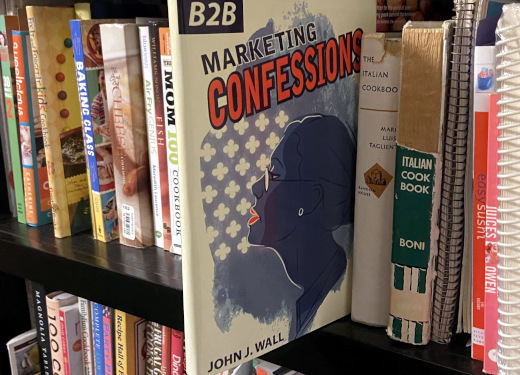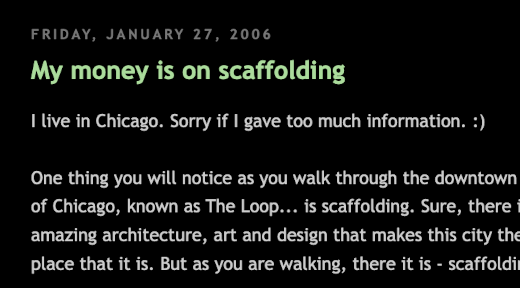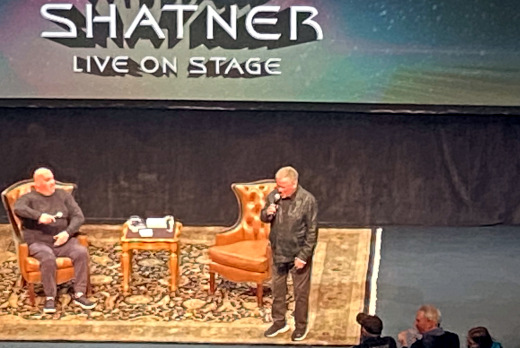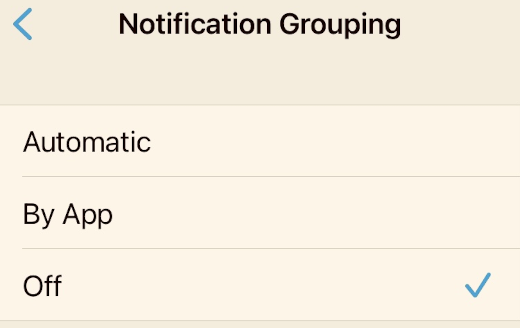Last In First Out For My Email

AI-generated image by DALL-E of a wood and paper inbox on a desk
There's nothing like coming back in the morning from a vacation where you worked really, really hard to not check work email for the entire time, only to be faced with a burgeoning inbox of unread messages. As you take a sip of your preferred work-safe beverage and put hands to the keyboard, you are likely thinking, where the hell do I start? Do I sort through those marked urgent (wait, most of them are) or sort by sender and start at the top of the food chain (but that requires recall of the org structure). What do you do?
For me, it's simple - I start with the last email in, at the top, and work my way down. So the last message in is the first out. Last-in, first-out, or as the accountants call it, LIFO.
The Reason for Whom to be Pleasing
I didn't always use this approach. Some of the approaches I mentioned are ones I have used over the years. When you get down to it, it's almost a no-win situation - someone's message won't get read as quickly as they want it to be read. With LIFO, someone is getting responded to quickly, and starting at the top of the list is also easier to manage. My ultimate goal for using LIFO is to get to inbox zero, something I always strive for.
With any process you choose for any task, it's always nice to have some validation for it. Initially I didn't tell anyone about my approach as I didn't want them to be slighted if their messages came in earlier during my out of office period. I got some reassurance of my choice from John C. Dvorak, the veteran technology journalist and co-host of the No Agenda podcast. During one episode he was talking about email and stated he uses LIFO for pretty much the same reasons I do. As he emails with pioneers in technology, I couldn't have a better endorsement.
How do you manage your inbox? Do you LIFO, first-in, first-out or FIFO? Or something else? I welcome your thoughts in the comments to this post. Of course now that my approach is out in the open, I expect more emails to be sent to me just as I return to work.
Deconstructing Last In First Out
Perfection can be the enemy of the good. When it comes to a digital stack of messages before you, choosing a method to process them that you are comfortable with is paramount. My choice of LIFO as a method has worked for me, and it still allows me to sort through my inbox to find, say, messages from my boss if needed.
This is from The Hot Iron, a journal on business and technology by Mike Maddaloni.
Did you enjoy this? Subscribe to The Hot Iron by RSS/XML feed or Read by Email
Strategize • Technology • (0) Comments • PermalinkMy Takeaways From Rereading B2B Marketing Confessions

Timeless is a term that, when applied to something it indicates that no matter how old it is, the relevance and overall utilization of the item never diminishes. It's a term that can be applied to many things, including literature. A few timeless written works that come to mind include the Holy Bible, War and Peace and Atlas Shrugged among many.
Could B2B Marketing Confessions be added to that list?
I first read B2B Marketing Confessions shortly after it was published in 2011. Its author, John J. Wall, compiled his many years of traditional and digital marketing into an insider book that, despite its size, packs a ton of useful information and insight over his career to that point. As John is also lucky to know me personally, I held onto the book rather than giving it away. In the process of rearranging my desk to make room for other books I keep buying but never get to reading, I decided to revisit this book, over a dozen years after I first read it, especially as I realized I never wrote takeaways from it the first time. Oops.
With the timeless inference already out there, it may come as no surprise I still got a few takeaways from it today.
Solid marketing principals are timeless – Sure some of the names of specific tools are dated and HubSpot was nowhere then what it is now, but the types of tools and how you use them is still relevant today. Not to mention the hard, non-glamourous work that is behind the scenes in developing the marketing strategy.
Crossing the making-payroll chasm – This resonated to me, where the reference is regards to your business starts out as something where you just trying to eek by and concerned about making payroll, but then to take it to the next level you really need to invest and work hard to make it. Many business don’t get this far, and those that do still have a not-so-easy journey ahead.
Your CRM system won’t run itself – No truer words or thoughts can say this and it’s no different today than it was when this book was written. Any CRM system needs to be fully and properly administered, maintained, developed, governed and evaluated, let alone used properly by its end users.
Should the book be revised? – As John has written other books since and he shares his knowledge and research weekly as co-host of the long-running Marketing Over Coffee podcast, where I would vote for him to do it, I wouldn’t press him on it either.
B2B Marketing Confession flows from the product to how you market and sell it. Sprinkled throughout the book is John’s wit and anecdotes from the road, many I have had the good fortune to hear first-hand from him. I recommend this book for multiple categories of readers. It serves as a great reference for someone interested in marketing as a career, someone who doesn’t work in marketing but wants a better understanding of what they do, as well as those in the field who want to reflect on the profession. As you may guess I am going to hold onto my copy (I still need John to autograph it) however you can still find a copy online in print, digital and audio formats.
This is from The Hot Iron, a journal on business and technology by Mike Maddaloni.
Did you enjoy this? Subscribe to The Hot Iron by RSS/XML feed or Read by Email
Book Take-Aways • (0) Comments • PermalinkMy Long-Lost Blogger Blog

Where last December I wrote about celebrating 17 years of blogging apparently this was not exactly the case. According to an email I got from Big Tech behemoth Google shortly thereafter, in actuality I started blogging much earlier in 2006 than I remembered.
The email in question came from Blogger, a blogging platform Google acquired in the early 2000’s. In the message I was told that my inactive blog would soon be shut down. My what? I had no recollection of a blog at Blogger, so I clicked on the link and lo and behold there it was. At this long-abandoned site there were 2 posts both written on January 27, 2006.
What to do?
What was I to do? Should I keep it? Heck, it’s enough to write for one blog these days, forget two. So I decided to let it lapse but captured the 2 posts below, which I am archiving here. Interestingly they are similar to the early posts I wrote here at The Hot Iron in that they were rather short. These were written in the days before what was then called microblogging and later social media, so they were more concise thoughts rather than something in depth.
Welcome back to early 2006... here are those 2 posts – warts and all – for immortality, at least as long as this blog is here.
Just what we need! – Friday, January 27, 2006, 4:30 pm
When the creator of email, Ray Tomlinson, was asked what was the first email message text he sent, he did not remember. Where just across the river from Tomlinson's MIT lab in Cambridge, MA is the site where around 100 years earlier another professor, a guy named Bell, remembered the first words he said over his new invention, the thing we call the telephone.
So in that same spirit I don't think my very first post in my very first blog will be that memorable either. However I hope that my future posts will make up for it!
My money is on scaffolding – Friday, January 27, 2006, 4:54 pm
I live in Chicago. Sorry if I gave too much information. :)
One thing you will notice as you walk through the downtown section of Chicago, known as The Loop... is scaffolding. Sure, there is the amazing architecture, art and design that makes this city the great place that it is. But as you are walking, there it is - scaffolding.
Of course it is a symbol of growth and regeneration, but it is also a pain. As you are walking the sidewalks, there is a tunnel, blocking your view and passageways as you take in the Windy City.
So if you can't beat them, join them! So does anyone know of any any publicly-traded scaffolding companies?
Deconstructing a Long-Lost Blog
Where in one regard my forgotten Blogger blog was digital residue that needed overdue cleanup, in another it was a serendipitous encounter with the past that people don’t often get – the time I learned of a long-lost Shutterfly account was another. Embrace opportunities such as these, for we don’t know what else we have forgotten or if it will ever come back to us.
This is from The Hot Iron, a journal on business and technology by Mike Maddaloni.
Did you enjoy this? Subscribe to The Hot Iron by RSS/XML feed or Read by Email
Blogging • Diversions • (0) Comments • PermalinkMy Takeaways From TekWar

AI-generated image by DALL-E of someone writing a science fiction story
Not a day goes by when I don’t hear some comical reference to predictions that by 2020 we would have flying cars. Forecasting the future isn’t an exact science, but it can be fun to explore. Today some things are as they were predicted (like watch phones) and others are just not quite there yet (like living on the Moon).
What will life be like 100 years from? Will we finally have flying cars or something even better? Will we still have the societal problems today, will they go away or will be have completely new ones? All of this is explored in the science fiction book TekWar by William Shatner. Yes, the same William Shatner known for his role as Captain Kirk in the original Star Trek series, and beyond.
First published in 1989, TekWar is set in 2120. The hero of the novel is Jake Cardigan, a former police officer who is released from a futuristic prison early to work as a private investigator on a case. “Tek” is a futuristic illegal drug that got Jake in trouble and still plagues society. Where the technology of the time plays a key role in this story, it is the people and interactions with that technology that are core of the story.
But is it possible to have takeaways from the science fiction book? I sure did.
Did Shatner predict social media and print-on-demand books? – At one point in the story there’s mention about someone filming all the bad things in the city, and how it is presented sounded familiar to the livestreaming over social media that many – including myself – have done and continue to do. The concept of books printed on-demand, something that is a thriving business today, was presented in the story as done at the Dalton-Walden American Faxbook Centre (a nod to two now-defunct bookstore chains). Even android robots were able to print books from their abdomen.
The seedy side of life still exists – Where it would be nice to think that 100 years from now – or even in a shorter time period – the underbelly of society was reduced or eliminated. That wasn’t the case in TekWar, and my guess it won’t be when my descendants will be on this mortal coil.
Finally – There are flying cars in Shatner’s 2120, if that’s any comfort to you.
How I Learned About TekWar

Last Fall William Shatner did a 5-city spoken word tour that kicked-off in none other than Appleton, Wisconsin, the city where I now call home. Why? I have no idea for sure, but the Fox Cities Performing Arts Center was the venue and was filled to about half-capacity for this unique show.
As it was in the midst of the actors and writers strikes, Shatner wasn’t even supposed to acknowledge any specific roles or characters he played by name. After a showing of the Star Trek II: The Wrath of Khan for which he was not “allowed” to even introduce, he took the stage for over 90 minutes of telling stories and answering some audience-submitted questions. At the young age of 92 on the night of the performance, he was not only animated and witty but an inspiration for anyone to be like him at that age, if we make it to that far.

Shatner was, however, able to talk about TekWar during his dialog, the first of a series of science fiction novels he wrote. As I previously was unaware he was a writer (I was aware of his “singing” career, but I digress) I had to get a copy of it. A few days later I bought a copy at a used bookstore not far from the theater I saw him at and brought it with me on a business trip. As I share all books I read, I decided to leave TekWar in the seatback pocket of the flight I was on when I finished reading it. Hopefully someone was able to find it and enjoy reading as I did about the trails, tribulations and travels in the future.
This is from The Hot Iron, a journal on business and technology by Mike Maddaloni.
Did you enjoy this? Subscribe to The Hot Iron by RSS/XML feed or Read by Email
Book Take-Aways • (0) Comments • PermalinkMy Wish: Globally Ungrouping iOS Notification

As someone who works in software, I’m often confronted with wishes and change requests from users. Those wanting these features themselves would find them useful; whether or not they would be beneficial to other uses the whole other story. Part of my job is to allow them to have those by working with our developers to make them happen. Or not.
For myself I often have requests for the software I use, which these days is mostly business applications and mobile apps. From my years of experience, I realize making such requests is often a fruitless endeavor. Why? Most likely there’s no channel to make such requests and if there’s a contact it is likely a one-way ticket to an abyss. That being said there’s an issue I have had with iOS, the operating system that powers iPhones, that has been bugging me for years.
My wish is for the option to turn off the default grouping notifications for all apps.
How It Is Now
Whenever you install a new app and first open it you are most always prompted if you’d like to receive notifications from the app. Such notifications are message banner that appear or persist over your home or lock screen. These are for “useful” information from that app - whether an alarm, a bid came through on an auction or whatever. By default, these notifications are grouped by app so they appear “stacked” and you must click on the stack to see each one.
Often I have an issue where sometimes I miss a single notification as there are multiples for an app. To mitigate this, I have to go into Settings and turn off notification grouping every time I install a new app. When I flashed my phone recently due to a power-hogging issue (which resolved it by the way) and manually added each app back rather than using a backup, I had to turn off this grouping for each and every app, which needless to say was a pain in the ass. The accompanying image to this post shows the switch in iOS settings for an individual app.
How It Should Be
I wish there was an option where I (or you or anyone else) could set notification groupings to default to being off for all apps instead of on. Where in the world of Settings on an iPhone would this exist? I’ll leave it to the user interface/user experience (or UI/UX) experts to design. This would make my life so much easier – yes, I am asking for more notifications, not less. Sadly, I rely on the technology to tell me what to do too often, and this is why I surround myself with computers, because aren’t they supposed to make life easier?
Are you with me on this? Or not? Let me know either way in the comments of this post.
Deconstructing Software Features
Productivity is measured in different ways by different people. App notifications help me keep on top of what’s due or next especially at times when there’s too many things going on. Having the ability to easily customize those en masse would be a lot easier than doing them one by one, which is the only current option. I think it’s a valid request. I don’t know if Apple would listen to me, but I have to put it out there in the abyss.
This is from The Hot Iron, a journal on business and technology by Mike Maddaloni.
Did you enjoy this? Subscribe to The Hot Iron by RSS/XML feed or Read by Email
Build • Mobile Technology • (0) Comments • Permalink
